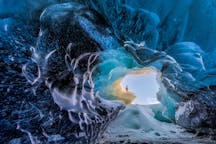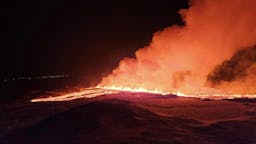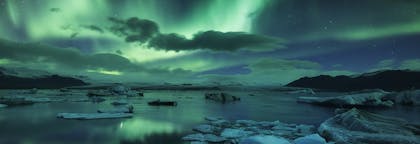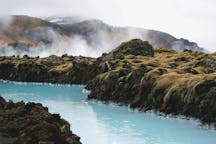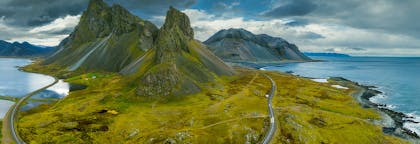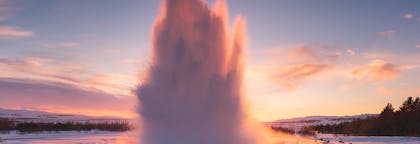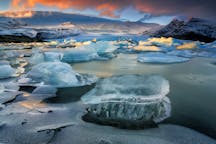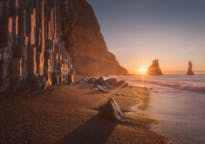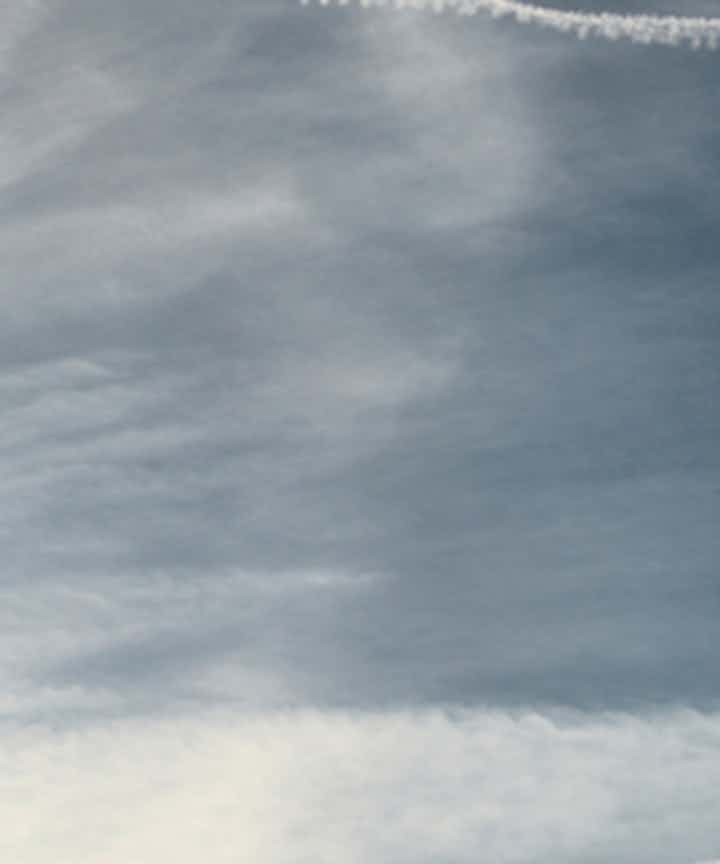
Best Paragliding Tours in Iceland
Select starting location
Select dates
Add travelers
Paragliding Tours
Refine the results by using the filters
Explore an unequalled wealth of tours and packages
Verified customer reviews
Read first-hand reviews by customers from across the world
Paragliding Tours in Iceland
Paragliding in Iceland offers an exciting and unique way to experience the country's spectacular landscapes from a bird's-eye view. As you soar through the skies, the contrast of Iceland's rugged terrain, sprawling glaciers, volcanic fields, and picturesque coastlines unfolds beneath you in an awe-inspiring tapestry of natural beauty.
These tours are designed to provide a safe and thrilling aerial adventure, accessible to beginners and experienced flyers, guided by expert pilots who ensure a memorable and secure experience.
The essence of paragliding tours in Iceland lies in their blend of excitement and serenity. After a thorough safety briefing and gearing up, you take to the skies in a tandem flight with a seasoned pilot.
The sensation of floating over Iceland's diverse topography is unparalleled, offering a peaceful yet exhilarating experience. Whether gently gliding over the verdant valleys or circling above dramatic cliff faces, each flight is a unique journey shaped by the winds and the stunning scenery below.
What sets paragliding apart is the activity itself and the commitment to environmental sustainability and safety. Operators strictly adhere to eco-friendly practices, ensuring minimal impact on the pristine Icelandic environment. Additionally, they prioritize safety, constantly monitoring weather conditions to provide the safest and most enjoyable experience possible.
Paragliding in Iceland is more than just an adventure sport. It's an opportunity to connect with nature in its most majestic form, offering a perspective on Iceland's landscapes that is as unforgettable as it is breathtaking.
Frequently asked questions
What are the best paragliding tours in Iceland?
Another excellent paragliding tour in Iceland is this thrilling one-hour adventure over Vik, also for about 244 USD per traveler.
How much does paragliding cost?
Is it worth it to paraglide in Iceland?
What is paragliding?
How safe are paragliding tours?
Can anyone experience a tandem paraglide?
All participants need to be over 12 years of age. Those under 18 will need written permission from a parent or guardian to participate in a paragliding tour.
What can I expect from a tandem paragliding tour in Iceland?
How fit do I have to be to participate in a paragliding tour?
Can I take a paragliding tour if I have mobility issues?
Are there height and weight and age restrictions for paragliding?
What if I’m scared of heights?
The experience of paragliding is not like skydiving. You’re not jumping from a plane thousands of feet off the ground. You begin on the ground and slowly glide to a comfortable height. The feeling can be described as similar to looking out of an airplane window.
If you’re looking at this page, it already means that this is something you’re interested in doing, so your fear of heights is probably something you will overcome the moment you see the incredible views.
If you’re concerned about anything before take-off, let your provider know, and they will be able to make you feel safe.
What clothing should I wear on a paragliding tour?
In Icelandic summer, wearing many layers rather than one or two thick items is always better. It’s a good idea to ensure you have a waterproof/windproof top layer, thin gloves, and a hat to wear under your helmet.
When out in Icelandic nature, appropriate footwear is essential. Your shoes must have a decent grip. Hiking boots are recommended.
Will the weather affect my paragliding tour?
Your provider wants to ensure everyone can experience a fantastic flight, but they must prioritize safety. They will not take any unnecessary risks if the weather is unsuitable for flying.
If your flight is canceled due to weather conditions, there are always processes in place to either rebook your flight or give you a full refund.
How long does a typical paragliding tour last in Iceland?
Do I need any previous paragliding experience to join a tour in Iceland?
What kind of training or briefing is provided before a paragliding flight?
Can I paraglide in Iceland throughout the year, or are there seasonal restrictions?
What are the most popular locations for paragliding in Iceland?
Can I capture photos or videos during my paragliding experience?
What measures are in place to ensure the environmental sustainability of paragliding tours in Iceland?

Download Iceland’s biggest travel marketplace to your phone to manage your entire trip in one place
Scan this QR code with your phone camera and press the link that appears to add Iceland’s biggest travel marketplace into your pocket. Enter your phone number or email address to receive an SMS or email with the download link.






